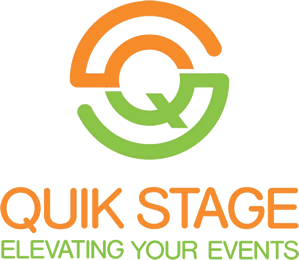Today’s kids are bombarded with distractions from the moment they get up in the morning to the moment they fall asleep at night. We like to blame devices, video games, and the unlimited access to a myriad of shows and movies that come along with the numerous streaming services many of us subscribe to. While these are all valid sources of student distraction, we often miss the less obvious sources right in front of our faces.
Classroom noise is one of these distractions that often go overlooked. When we think of how to combat the effects of noisy classrooms, we may resign ourselves to the fact that we aren’t going to get kids to be quiet. The secret, though, is that we don’t have to. We just have to set the classroom up so it blocks outside noise and reduces the noise our wild children generate when they get together with their friends.
Kids Are More Sensitive to Noise
Even if we think the ambient sound in a room isn’t terribly disruptive, that may not be the case for the students who actually learn there. It’s because children are more susceptible to the adverse effects associated with excessive noise.
Background noise cancellation not only helps teachers hold the attention of students but is an important part of developing healthy children. Something that’s barely audible to adults can raise blood pressure in kids, impair their ability to concentrate, or even hinder their ability to learn speech and language.
Prolonged exposure to excess noise has been known to increase stress levels and anxiety in both children and adults, which snowballs into all kinds of problems with performance. On the other hand, keeping a more serene classroom can contribute to a general sense of calm. It’s a perfect environment for learning and productivity. So, how do we get there?
Noises from Inside the Classroom
The noises we associate with a buzzing classroom usually originate inside the room. Students chatting, digging textbooks out of their backpacks, and sliding seats and desks around while they fidget in their seats. All the sounds of life happening.
These kinds of noise cannot be kept out of the room since they originate from the inside. The way to deal with this type of noise is through the use of acoustical treatments that absorb and scatter sound waves. These acoustical treatments address the issues of reverberation and echo and are key to keeping background noise in check.
Noises from Outside the Classroom
The other type of noise we deal with in classrooms originates from outside. These sounds may come from a nearby highway, gymnasium, or even the cafeteria. They can be particularly loud and may be impossible for the teacher to control, meaning they are a continuous disruption to the learning process.
Our immediate reaction to this type of noise is usually to shut the windows or doors. It’s a natural instinct, but the windows and doors in most of our aging schools aren’t built to effectively keep sound out. Our classroom acoustics standards should be higher than that.
When you want to do something serious about keeping outside sounds where they belong, you’ll need to incorporate soundproofing materials. These materials add mass and density to walls, windows, and doors. They can also create an air gap between layers, adding to their soundproofing capabilities. If you’ve got too much sound creeping in from outside, this is your solution.
Acoustic Solutions that Work in Classrooms
If you aren’t familiar with modern acoustical treatments, you may be picturing foam egg cartons glued to the drywall. It’s not a very functional or attractive solution to classroom noise in school settings. Teachers like to plaster their walls with student artwork, motivational posters, and M.C. Escher drawings, so bland, bumpy foam rectangles don’t really fit the bill. The reality is that today’s acoustical treatments are as practical and functional in the classroom setting as they are at controlling excess sound waves in the space.
Acoustic Panels
Classrooms are ripe for reverberation. They are filled with hard, smooth surfaces, and they’re also filled with kids. That means the room is never silent. Some kid is always clicking a pen, smacking their gum, or scribbling out doodles. You may also have a noisy HVAC system contributing unwanted noise in the background. All these sounds combine to create ambient noise that interferes with the teacher’s voice and can negatively impact performance in school.
Adding soft, porous surfaces is the best way to keep reverberation at bay. By absorbing some of the sound waves, we reduce the amount of ambient sound floating around the room. This means the teacher’s voice faces less competition, and the students are able to hear them more clearly. It can also positively impact retention rates when test time comes.
Modern classroom acoustic panels still add those soft, porous surfaces where you need them, but they also look great, no matter what look you’re going for. You can choose from dozens of beautiful colors, or you can print custom artwork on them, meaning your decor pulls double duty. Many of them are tackable and resist mold and mildew, making them the perfect surface for classroom walls.
Window Inserts
If you’re dealing with a substantial source of noise from outside, window inserts are a cost-effective way to deal with it. Use them to create an airtight seal around your aging windows and add a second pane and air gap that blocks more sound than you may have thought possible.
Not only do window inserts lower stress and distraction levels by reducing the volume of unwanted noise in the room, but they make the room more energy efficient. The increased thermal efficiency provided by window inserts makes it easier to keep the room from getting too hot or cold. Keeping students comfortable is an essential part of creating an effective learning atmosphere.
Door Seal Kits
If you deal with a lot of sounds that originate from outside the room but inside the building, your door may not be doing you any favors. Classrooms generally have pretty thick doors, but the space around them allows sounds from down the hall to come creeping into the classroom.
Door seal kits are great acoustic solutions for sealing up the space around your doors. They include everything you need to seal the sides and top of the door, and those with automatic door bottoms allow the door to swing freely over the floor but seal when the door is closed. It’s a small project with a big performance.
Sound Levels Vary Throughout the School
It’s important to remember that there are areas in every school that are louder than others. We can pretty safely assume that gyms and cafeterias will be louder than libraries and study halls. New schools are designed with ample space between loud and quiet zones within the building, but they don’t have that luxury for many in older schools.
When retrofitting older buildings with acoustical materials, it’s important to focus on addressing louder areas of the school. It’s far easier to soundproof gyms and cafeterias than it is to soundproof classrooms. They can be treated in the same ways as classrooms, but reducing the noise there means the sound levels in all the rooms are lowered, rather than in just one.
Setting Students Up for Success
If we want the future leaders of our world to absorb all they can out of their academic experiences, we need to make sure we maintain the speech intelligibility of our teachers. Since so much of in-class instruction is delivered verbally, it’s important that the students are able to comfortably hear what’s being said. It’s not always enough for our teachers to speak loudly and clearly. Sometimes we simply have to tackle the background noise in the room.
In a best-case scenario, students can collaborate and interact with one another and still hear the instructions from their teachers. We want them building strong social skills and working relationships, but not at the cost of a quality education. This is very achievable, but you need to incorporate appropriate acoustic solutions into your classroom décor.
This article is courtesy of Acoustical Surfaces, which offers more than 35 years of experience with solutions in noise control, soundproofing and acoustical products, www.acousticalsurfaces.com.





